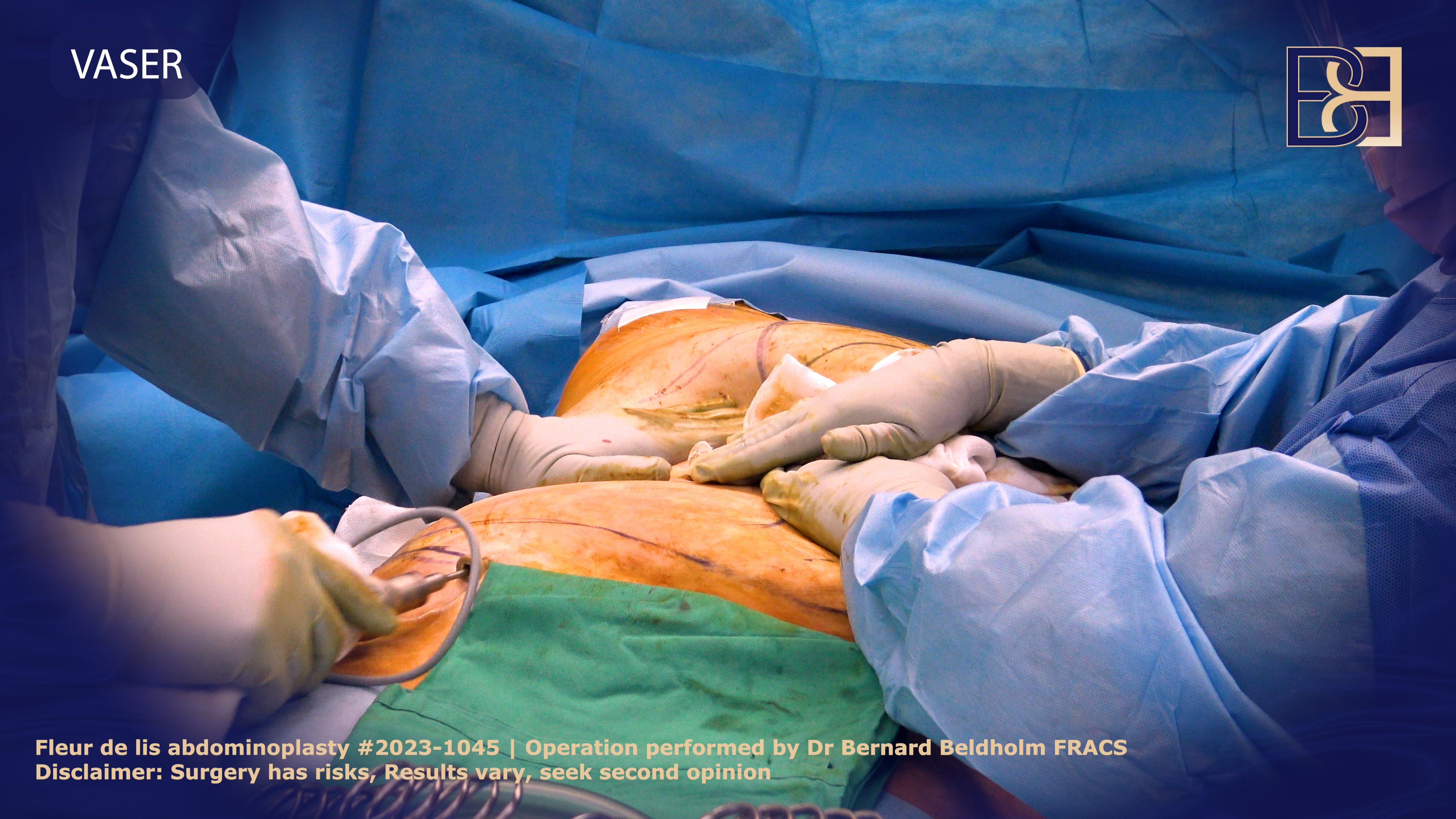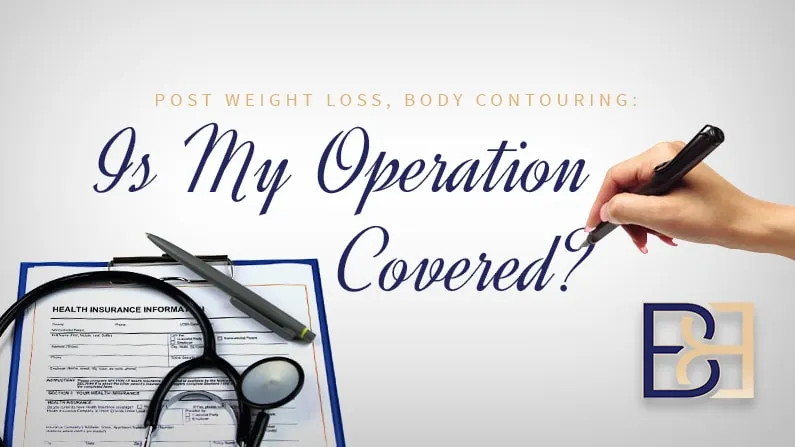Treating ** skin resulting from bariatric surgery can involve less invasive, and frankly, less effective, non-surgical solutions like lifestyle changes, creams, and compression garments, or surgical procedures, like abdominoplasty, which have dramatic and permanent results.
Major weight loss following bariatric surgery can be a gratifying and life-changing experience. However, as the weight begins to shed, excessive ** skin can develop, especially on the abdomen and back. An ** and unsightly side effect of major weight loss and excessive loose skin can have some serious health and psychological implications.

Book your appointment online now
Many post-bariatric patients who visit my clinic after losing significant weight are looking for solutions to this unpleasant side effect.
My goal for writing this article is to share my experiences and review options for treating loose skin on the abdomen and back following bariatric surgery.
Impact of Weight Loss on Skin Elasticity After Bariatric Surgery
The level of skin elasticity following bariatric surgery is influenced by several factors, including:
Genetics

Every one of us has inherited some physical traits that contribute to the everyday functioning of our bodies, some positive and others, not so much. When it comes to developing ** skin after weight loss, people with naturally thinner skin are generally more likely to develop loose skin after weight loss surgery than those with thicker skin.
Body Mass Index

Losing a substantial amount of weight in a short period gives your body less time to contract naturally, leading to excess loose skin. If you shed more than 50 kgs after bariatric surgery, you’d be more likely to experience more ** skin than those who lose much less.
Nicotine
Nicotine use reduces the production of collagen and elastin in the body. When collagen production is low, the skin loses its elasticity. This causes smokers to be more prone to loose skin on their abdomen and back following bariatric surgery.
Age
Older patients are more likely to develop ** skin after bariatric surgery. As you age, your body’s collagen and elastin production decreases, causing the skin to become thin. When the elastin in your body is low, your skin also takes much longer to heal naturally, causing redundant skin.
Pre-Existing Medical Conditions
There are certain medical conditions that compromise collagen production in the body which affects the skin’s ability to bounce back after an abdominoplasty. Some of these illnesses include Pseudoxanthoma Elasticum and subcutaneous T-cell lymphoma.
Non-Invasive Approaches For Treating Loose Skin Following Major Weight Loss Surgery
For patients with minimal ** skin, I highly recommend starting with non-invasive procedures and treatments such as:
Lifestyles Changes
After bariatric surgery, because the intestines will lose some of their ability to absorb nutrients, eating a healthy diet will help to ** the immune system. This also speeds up wound healing and increases collagen production. It’s also important to eat smaller portions and to thoroughly chew your food to ensure that the nutrients are fully absorbed.
Exercising is a crucial step in the post-bariatric journey. Exercise gives your body a toned look while reducing the excess skin. If you exercise regularly, you are less likely to return to your pre-bariatric state.
Staying hydrated is another important step, as drinking plenty of water helps your skin stay soft and increases its elasticity.
Vitamin and Mineral Supplements

I recommend that my patients take supplements like Iron, Vitamin E, D, B12, and vitamin C for optimal skin healing. These vitamins help in skin regeneration and ** elasticity. According to a study published in PubMed, “Particular focus is placed on substances that protect the skin against oxidative and UV-induced damage, dehydration and a loss of elasticity: vitamins A, C and E; selenium; zinc; copper; silicon; polyphenols; carotenoids; and essential polyunsaturated omega-3 and omega-6 fatty acids.”
Compression Garments
Compression garments are short-term remedies for ** skin. By applying consistent pressure on the loose skin, compression garments promote blood flow to the skin. ** blood flow enables better nutritional distribution in the skin, thereby promoting collagen production.
Collagen-Infused Creams
Topical treatments are best known for their moisturising properties. Most topical treatments are infused with collagen-boosting ingredients that promote suppleness and skin elasticity. However, no study has proven the effectiveness of topical therapies in reducing excess skin.
Technology-Assisted Procedures
Here are some non-invasive procedures that one can consider during this journey.
Radio Frequency Skin Tightening – RF therapy aims to tighten loose skin and stimulate the production of collagen by inducing controlled heat to the skin. The ** take more than one radio frequency therapy to manifest. It is unlikely to provide a significant result.
Laser Skin Tightening – Laser therapy has been promoted for skin tightening. However, there is no evidence that it works.
Cryolipolysis – Also known as CoolSculpting, this procedure involves freezing fat cells, which reduces fat. It is unlikely to have a significant effect on post weight loss loose abdominal skin.
Surgical Options for Treating Loose Skin
Non-invasive treatments and procedures mostly compromise a small part of the post-bariatric journey. If you have extensive amounts of excess skin, you should opt for surgical procedures to ** it. Abdominoplasty offers a wide range of techniques that are very effective in ** substantial amounts of ** skin. You should opt for one of the following procedures for optimal results.
Full Abdominoplasty (Tummy Tuck)

If you have ** skin on your upper and lower abdomen, you are a good candidate for full abdominoplasty (tummy tuck). This procedure surgically removes excess skin while simultaneously correcting diastasis recti, which is caused by abdominal muscle separation. Correction of Diastasis recti involves strengthening of abdominal muscles to prevent the abdominal wall from collapsing. A traditional tummy tuck is conducted by making a horizontal incision.
Full abdominoplasty will take us approximately 3 to 4 hours to perform, after which I will have you remain in the hospital for about 4 days for supervision. Please note that the recovery period is 2 to 4 weeks.
Fleur-de-Lis Abdominoplasty

Fleur-de-Lis abdominoplasty gained its name from its t-shaped incision, which resembles a lily flower. The procedure is invasive and has a lengthy recovery period, but it is very popular among my major weight loss patients due to its high success rate. Fleur-de-Lis abdominoplasty is more efficient in removing loose skin than standard abdominoplasty surgeries. You should have minimal skin on the back to undergo Fleur-de-Lis abdominoplasty.
Besides its aesthetic outcomes, Fleur-de-Lis abdominoplasty prevents the risks of skin infection caused by excessive skin folds.
The one notable downside to FDL surgery is that it leaves behind extensive scarring due to vertical and horizontal incisions. Most of my patients find that the scar is an acceptable sacrifice when compared to the major changes in their body, health, and overall well-being (inside and out).
Extended Abdominoplasty (Tummy Tuck)

An extended abdominoplasty offers a middle ground between a full abdominoplasty and a belt lipectomy, combining the aspects of both procedures. If you are looking to reposition your belly button or get rid of extra skin on your hips, back, and abdomen, extended abdominoplasty is a good option. This tummy tuck procedure is known for strengthening the abdominal wall by correcting diastasis recti.
Extended abdominoplasty surgery takes longer than full abdominoplasty due to its invasiveness. If you are an extended tummy tuck patient, you may start doing light chores after 3 or 6 weeks, depending on your recovery speed.
Lower Body Lift Surgery (Belt Lipectomy)

Lower body lift surgery (belt lipectomy) ** loose skin around the belt line to achieve a toned look.
Due to its invasive nature, belt lipectomy requires the most recovery time compared to other abdominoplasty procedures. The standard recovery period for a belt lipectomy is 4-8 weeks after the surgery.
Lipo-Abdominoplasty
Lipo-abdominoplasty is a surgical procedure that combines liposuction and full abdominoplasty. In addition to strengthening abdominal muscles and tightening excess skin, lipo-abdominoplasty ** stubborn excess fat tissue in the abdomen
A study by NCBI states that “Lipo-Abdominoplasty is a new, more physiological and versatile operation that drastically reduces complications, extends the indications for patient recruitment to the obese and super obese populations and ** the surgery while also giving a better aesthetic result with ** recovery.”
VASER Liposuction

Vibration Amplification of Sound Energy at Resonance (VASER) liposuction is an advanced liposuction procedure that targets stubborn fat cells while protecting the surrounding tissues. I conduct this procedure using ultrasound technology to liquefy fat from the underlying abdominal muscle.
Ultrasound technology during this procedure makes it more effective than standard abdominoplasty due to its precision and desirable results. VASER liposuction is popular among my patients with fat tissues as it loosens the skin for easier excision. VASER liposuction is generally ** with few complication risks and lesser recovery time.
Recovery Time Needed for Each Surgery
Before abdominoplasty surgery, you should arrange to take some time off from work to recover and heal without any complications.
Full Abdominoplasty: Because only a single incision is needed, traditional abdominoplasty generally involves a shorter recovery period of 2 to 4 weeks.
Extended Abdominoplasty: Recovery after extended abdominoplasty takes a longer time (between 3 and 6 weeks) than full abdominoplasty as it involves **loose skin in more areas of the body.
Belt Lipectomy (Circumferential Abdominoplasty): Belt lipectomy has the longest recovery period (about 4 to 8 weeks) as it is the most invasive surgery.
Full VASER Lipo-Abdominoplasty: The precision of VASER lipo-abdominoplasty, which avoids the development of further complications, making recovery easier and shorter. The standard recovery time is 2 to 4 weeks.
Extended VASER Lipo-Abdominoplasty- After an extended VASER lipo-abdominoplasty surgery, you should expect a recovery period of 2 to 4 weeks.
FDL – Due to its invasiveness, Fleur-de-lis abdominoplasty ranges from 3 to 6 weeks.
he Down Side of Abdominoplasty Surgery
An article published by PubMed concludes that “(t)he complications of abdominoplasty vary in severity and impact they have on the aesthetic outcomes. Recommendations for prevention and management are based on various levels of evidence, with a risk of observer bias. However, most complications can be treated appropriately following the current standards, with **.”
During our consultation, I will go over the potential risks and complications associated with these surgeries. Below are some of them.
Hematoma: Hematoma is the collection of blood in a tissue pocket due to injury. Common symptoms of hematoma are bruising, tenderness and pain on the incision site.
Abnormal scarring: After an abdominoplasty procedure, the incision wounds left behind heal, leaving a scar. Most incision scars are hidden as they are made on the lower abdomen.
Blood clots: Major surgeries may reduce your mobility, making it **to get Deep Venous Thrombosis. You can reduce the risk of DVT by doing light movement exercises and avoiding smoking.
Wound infections: I advocate for proper wound care as a way of getting desirable results. When the surgical wound gets infected, it heals in a raised position, changing the intended aesthetic appearance of the scar.
Seroma: Seroma is a fluid that develops after abdominoplasty surgery. The fluid forms in the body and is often mixed with other bodily fluids. Seroma is noticeable under the skin.
Loss of skin sensitivity: Loss of skin sensitivity is largely caused by nerve damage during surgery. Physical therapy and nerve stimulations are common methods of treating skin sensitivity.
Skin necrosis: When an abdominoplasty is performed, blood flow to the skin reduces, causing the skin cells to die. Skin necrosis manifests itself through discoloured skin patches.
Cost Considerations

The cost of each surgical procedure varies depending on a variety of factors, like the length of surgery and the extent of loose skin. More invasive procedures, like belt lipectomy, are more expensive than standard procedures. Below is a breakdown that provides a general overview of cost considerations, though the actual cost of each surgical procedure varies.
During our consultation, I will give you a more detailed cost estimate so you can make a well-informed decision that best suits your budget and financial situation.
FAQs
The following are some of the most frequently asked questions my patients ask about surgical solutions for treating loose skin on the abdomen and back:
Will Insurance Cover for the Surgical Procedures?
Generally, private insurance covers abdominoplasty procedures only when they are deemed medically necessary. Though it is essential to discuss the terms of your coverage with your insurance provider, I will discuss this with you during our consultation. Abdominoplasty is considered medically necessary when the presence of excess skin causes physical issues that are currently affecting or are likely to affect one’s health, such as hygienic concerns, functionality, and physical discomfort.
How do I know if I am a Good Candidate for Abdominoplasty procedures?
If you have undergone massive weight loss, gastric bypass, bariatric surgery, or multiple pregnancies and have excess skin as a result, you are likely a good candidate for a tummy tuck procedure.
How Long Do the Results from Abdominoplasty Procedures Last?
Though an abdominoplasty’s results are considered permanent, the longevity of your results relies on multiple factors such as age, future weight changes, and lifestyle considerations. It is important to exercise regularly and maintain a healthy lifestyle so that you can enjoy the results longer.
Is There Anything I Can Do to Prepare for Abdominoplasty Surgery?
To prepare for abdominoplasty surgery, avoid extreme weight fluctuations, as they will reduce skin laxity. It is also essential to follow all pre-operative instructions to achieve your ** effectively. For a more detailed review of ways to prepare for your abdominoplasty surgery, see my related article, Preparing for Abdominoplasty Surgery. (insert after that article is published)
Bottom Line
There are many ways to treat loose skin after bariatric surgery. Though I have outlined various options above, I suggest that you schedule a consultation with me to discuss which method of treatment best suits you.
Book your appointment online now
References
Giordano, S., Victorzon, M., Koskivuo, I., & Suominen, E. (2013). Physical discomfort due to redundant skin in post-bariatric surgery patients. Journal of Plastic, Reconstructive & Aesthetic Surgery, 66(7), 950–955.
Qin, J., Guo, M. E., Xu, X. G., Zhang, C., Yu, C. Q., Li, Y. H., & Chen, H. D. (2021). A clinical evaluation of noninvasive and contactless radiofrequency techniques in the treatment of abdominal fat. Journal of cosmetic dermatology, 20(9), 2765–2768.
Rangaswamy, M. (2008). Lipoabdominoplasty: A versatile and safe technique for abdominal contouring. Indian Journal of Plastic Surgery : Official Publication of the Association of Plastic Surgeons of India, 41(Suppl), S48.
Aldaqal, S. M., Makhdoum, A. M., Turki, A. M., Awan, B. A., Samargandi, O. A., & Jamjom, H. (2013). Post-bariatric surgery satisfaction and body-contouring consideration after massive weight loss. North American journal of medical sciences, 5(4), 301–305.
Elander, A., Biörserud, C., & Fagevik Olsén, M. (2021). Excess skin after weight loss following bariatric surgery: focus on the abdomen. Surgery for obesity and related diseases : official journal of the American Society for Bariatric Surgery, 17(5), 986–993.
Vidal, P., Berner, J. E., & Will, P. (2017c). Managing Complications in Abdominoplasty: A Literature review. Archives of Plastic Surgery, 44(05), 457–468.
Sadeghi, P., Duarte-Bateman, D., Ma, W., Khalaf, R., Fodor, R., Pieretti, G., Ciccarelli, F., Harandi, H., & Cuomo, R. (2022). Post-Bariatric Plastic Surgery: Abdominoplasty, the State of the Art in Body Contouring. Journal of clinical medicine, 11(15), 4315.
Hoyos, A. E., & Millard, J. A. (2007). VASER-assisted high-definition liposculpture. Aesthetic surgery journal, 27(6), 594–604.
Rangaswamy M. (2008). Lipoabdominoplasty: A versatile and safe technique for abdominal contouring. Indian journal of plastic surgery : official publication of the Association of Plastic Surgeons of India, 41(Suppl), S48–S55.
Friedman, T., O’Brien Coon, D., Michaels V, J., Purnell, C., Hur, S., Harris, D. N., & Rubin, J. P. (2010). Fleur-de-Lis abdominoplasty: a safe alternative to traditional abdominoplasty for the massive weight loss patient. Plastic and reconstructive surgery, 125(5), 1525–1535.
Aly, A. S., Cram, A. E., Chao, M., Pang, J., & McKeon, M. (2003). Belt lipectomy for circumferential truncal excess: the University of Iowa experience. Plastic and reconstructive surgery, 111(1), 398–413.





